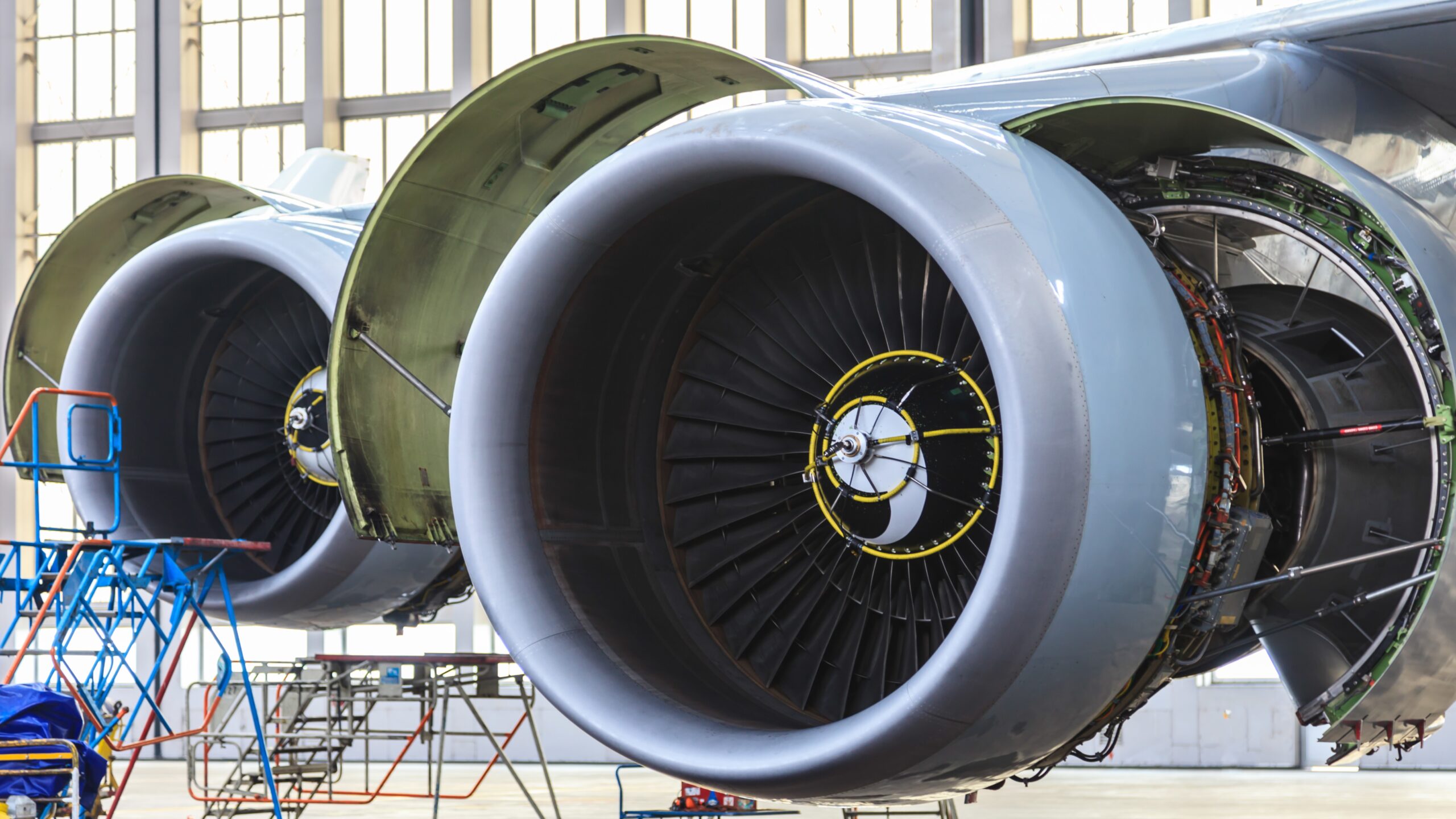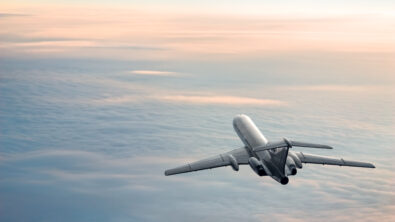Talking Aerospace Today – Authoritative Automation Part Two – Transcript

The Talking Aerospace Today podcast continues its exploration of authoritative automation within digital transformation maturity, using this episode to highlight the ways it can improve the aerospace and defense industry.
Listen to the full episode or continue reading for the transcript.
Patty Russo: Greetings, and welcome to another episode of Talking Aerospace Today from Siemens Digital Industries Software. I’m Patty Russo, and I’m once again joined by our VP of Aerospace and Defense, Todd Tuthill. In our previous episode, we continued exploring the automation stage of digital transformation maturity, and we took a closer look at the specific topic of authoritative automation. While automating the mundane targets those dull, repetitive tasks that engineers shouldn’t need and, frankly, don’t like to spend their time on, authoritative automation targets more complex tasks and truly transforms engineering processes into digital processes as defined by Dr. Will Roper’s report, “There is No Spoon.” In that episode, he has explained this and some ways companies can begin implementing it. He also shared a relatable example that shows the way authoritative automation has already transformed how we approach personal navigation, something we can all relate to.
Patty Russo: Today we’ll be continuing where we left off. So welcome back, Todd. To kick us off today, I’d like to start by asking, are some additional insights from Doctor Roper’s report that tie back to this idea of authoritative automation?
Todd Tuthill: Absolutely. Doctor Roper talks about various programs that have existed, and again the report was written in 2020. So it’s looking at the aerospace and the context of three years ago, but in the context of three years ago, he mentioned some programs. One of them was the Boeing T7A program, and that’s one of the first programs as far as Doctor Roper describes as really being built digitally, being built with this idea. And there’s some statistics we can now quote a few years on from there about the T7 program. Boeing has said they saw a 75 percent increase in first time quality and 80 percent, 80 percent reduction in assembly hours compared to traditional programs not built this way. That’s an incredible payoff for this kind of digital transformation maturity and the kind of thing that Doctor Roper’s talking about in his report.
Patty Russo: So the beauty of what you just said ties directly into one of the key challenges that our industry faces, which is workforce issues. So could you drill down a little bit on that or explain other reasons why authoritative automation is so key for the aerospace and defense industry going forward?
Todd Tuthill: Yeah. Let’s talk about the yin and the yang of aerospace right now. On the good side, never, never can I remember a time in my 30 years in aerospace where there where we’re just on the verge of doing so many incredibly cool things. We’re going to go back to the moon. We’re going to go to Mars. We’re going to have flying cars. We have commercial space travel within our lifetimes. Patty, we’re going to be able to take become astronauts and fly in orbit. There’s sixth-gen fighters being developed that are manned fighters that are going to connect to all these drones that are going to fly with them. Just so many things. I could go on and on.
Todd Tuthill: And this whole sustainability challenge about where we’re going to eliminate or reduce the use of fossil fuels. Just so many incredible cool things in aerospace coming but juxtaposed against that is the fact that there aren’t enough engineers to do all those things I talked about. They don’t exist and they’re not going to exist if we continue to do the things the way we’ve always done them. And I really see as one of the critical, important ways to solve that puzzle is we need to multiply the effectiveness of the engineers we have, and we need to use them to do the creative things that only engineers can do.
Todd Tuthill: And we need to automate all the other things that engineers would- that computers could do better. And then even find ways. we’ll talk about through authoritative automation and generative design and optimization, to take over things that are generally thought of as only being capable by human beings, and let the computers do it. I mean, think about the example we talked about from navigation. If I could go back to myself in 1998, when I was traveling back and forth to Seattle with that big 2-inch binder of paper in my hand and I said, “Todd. Imagine a day 25 years later, when you’re going to be able to get off a plane in Singapore. You won’t need your book anymore. You won’t even know where you’re going. You get off the plane, you text somebody and say, ‘Where we having dinner tonight?’ You put that in this little magic box, in the little magic thing that can talk to the Internet to magically in which—I didn’t know what the Internet was hardly back then—and that it would just send a car to me and the car would show up and I wouldn’t have to give him any money because it’s embedded in my phone and they just drive me there.”
Todd Tuthill: And think about all the time because the I think about all the hours I spent planning all those out there. I have to think about that. It’s just an incredible thing that I think is coming to navigation. We need to do a similar thing for aerospace because while we’ve taken a few of these steps in aerospace, largely aerospace is living in a world of digitized paper, digitized paper and to some extent within given domains like mechanical design for instance, we had become model-based, but the models in mechanical are not connected very well to the models in electrical to the models and systems and simulation. And that’s the next step for our industry is to connect all those models so that we can go the way of this connected navigation we talked about and really dramatically decrease the amount of time it takes to design an aerospace product and the time it takes to build one. Such incredible things and that’s so necessary because if we don’t do that, there aren’t enough engineers to do all the work manually.
Patty Russo: So we just talked about why this is so critical in our industry. Let’s talk a little bit about what, and the what I’m going after is what are the types of skill requirements or training that engineers and technicians will need? And I’m going to have a part two to this question. What do engineers need to understand about the fact that this isn’t about replacing them, it’s about helping them do what they do better? So what are the skills needed and how do we overcome the perception that this could potentially take my job?
Todd Tuthill: So I’ll start with maybe a place people wouldn’t expect me to start, traditional engineers wouldn’t. This is something that I didn’t study in school. They didn’t teach me this in engineering school, but I’m going to say you need an open mind. You need to be able to think about things in new ways that hadn’t been thought about before, and be willing to kind of take a risk and say because like you talk about with respect to is it going to take my job away? I don’t believe it is. I believe it’s going to change our jobs. I think about it with respect to think of the Industrial Revolution and the idea of a steam engine. The idea of some of those kinds of things, a lot of people that were doing things manually, you know, plowing fields with horses and things like that said “I don’t want to steam engine. It’s going to take my job away.”
Todd Tuthill: Well, it didn’t take the job away. It changed it and I encourage engineers now to think about this kind of technology in that way. It doesn’t take your job away, but it certainly changes the way you work, and hopefully for the better. Hopefully it creates an environment that’s much more interesting, to be creative thinking, to think critically as opposed to doing mundane things, to making big decisions, and hopefully it all creates an atmosphere where an engineer can do the work of many more engineers so that we can accomplish all those cool things. We’ll say that’s one area.
Todd Tuthill: The other area I would encourage engineers to understand and get involved in is really the application of artificial intelligence and machine learning, because that’s going to revolutionize software. It’s going to revolutionize design and most aspects of our daily life in a very similar way that I described that the navigation apps changed the way we travel in places we’ve never been. And I really believe we’re going to look back in five years, you know, 2028, 2030 and just the explosion of this technology is going to be incredible. And I think it’s going to really, it has the opportunity, if we apply it correctly, to really make our work lives and our personal lives so much better. So have an open mind. Study AI/ML. Those are the two things I would encourage today’s engineers to do.
Patty Russo: So just like the going from the TripTik to your little machine in your hand doing the work for you saves you a ton of time and energy, so too is the opportunity in our industry. So what are some of the key regulatory considerations or safety measures that need to be implemented when employing authoritative automation in aerospace systems?
Todd Tuthill: So when you think about any tool we use for aerospace and the things we’re talking about, here are nothing more than just a more advanced tool than what we have today. We want to be convinced that the output of those tools is proper and correct, that it has value, number one, but beyond value is just, it’s true. We can trust it. And we’re going to have to come up with ways to understand and trust all the outputs of these tools. We’re not going to come to a day where many times soon where we’re going to go to ChatGPT say design mean aircraft and just hand that design off build and fly it. We’re still going to test things.
Todd Tuthill: I think the amount of testing can go down, but we still need to test things. We still need to validate and verify things and we’ll continue to do those in similar ways that we’ve done them, but we’ll just do them in a more automated fashion. It’s like building blocks. It’s back to that quick wins. We’re going to do things a step at a time, methodically, but as we create things just like when we developed the transistor for the first time. Right? We developed transistors. We had pieces of silicon. Transistors, built processors, and processors built bigger processors. One invention builds on itself and, this is, AI and ML is no different than that. It’s just another technology that we’ll use and understand and verify and have it build on itself until it creates something better.
Patty Russo: Thus the importance of the comprehensive digital twins and solutions and software that help enable these things to happen. Is there anything else about authoritative automation that you’d like to share that we haven’t already covered as we wrap up this episode?
Todd Tuthill: I’ll go back to, again, an example that Doctor Roper talks about in “There is No Spoon.” He talks about the century-series aircraft which are back, you know, earlier in the century when there were a bunch of companies building aircraft very quickly and innovating very quickly as opposed to today when there’s just a few companies building aircraft that take forever to build, that are very expensive and that comes out of the complexity of the aircraft that are being designed today. You know, orders of magnitude more complex, especially in the area of software and electronics, and it seems like to some extent we’ve developed all these complex things and we’re employing them in very complex ways to create incredible products. And now I think we need to take some time and think about not just the product itself and the complexity of the product itself, but think about the products we’re using to design those products.
Todd Tuthill: And, you know, back to digital transformation maturity and really think about maturing those products as well and the connections and the connectivity and the maturity and the viability of those, so that the tools we use to create aerospace products catch up with the complexity of the products themselves. And I think it’s going to take that to be able to continue to build these things and to stop this, this progression of, you know, it can’t take 10 years to design any aircraft and several hundred million dollars. Our economies just can’t sustain that. We need to find better ways, more efficient ways to design things so that aerospace doesn’t get to a point to where we just can’t afford it anymore.
Patty Russo: So that’s a great topic to wrap up this episode of Talking Aerospace today. Thank you, Todd. We’ll pick up on this and some other interesting aerospace and defense topics next time. Thank you to all of our listeners. We hope that you took away some useful information from today’s discussion and we look forward to talking to you next time. I’m Patty Russo and I look forward to having you join us on our next episode of Talking Aerospace today.
Siemens Digital Industries Software helps organizations of all sizes digitally transform using software, hardware and services from the Siemens Xcelerator business platform. Siemens’ software and the comprehensive digital twin enable companies to optimize their design, engineering and manufacturing processes to turn today’s ideas into the sustainable products of the future. From chips to entire systems, from product to process, across all industries. Siemens Digital Industries Software – Accelerating transformation.


